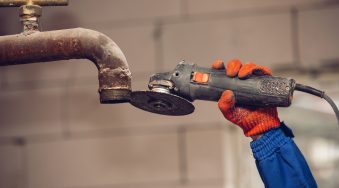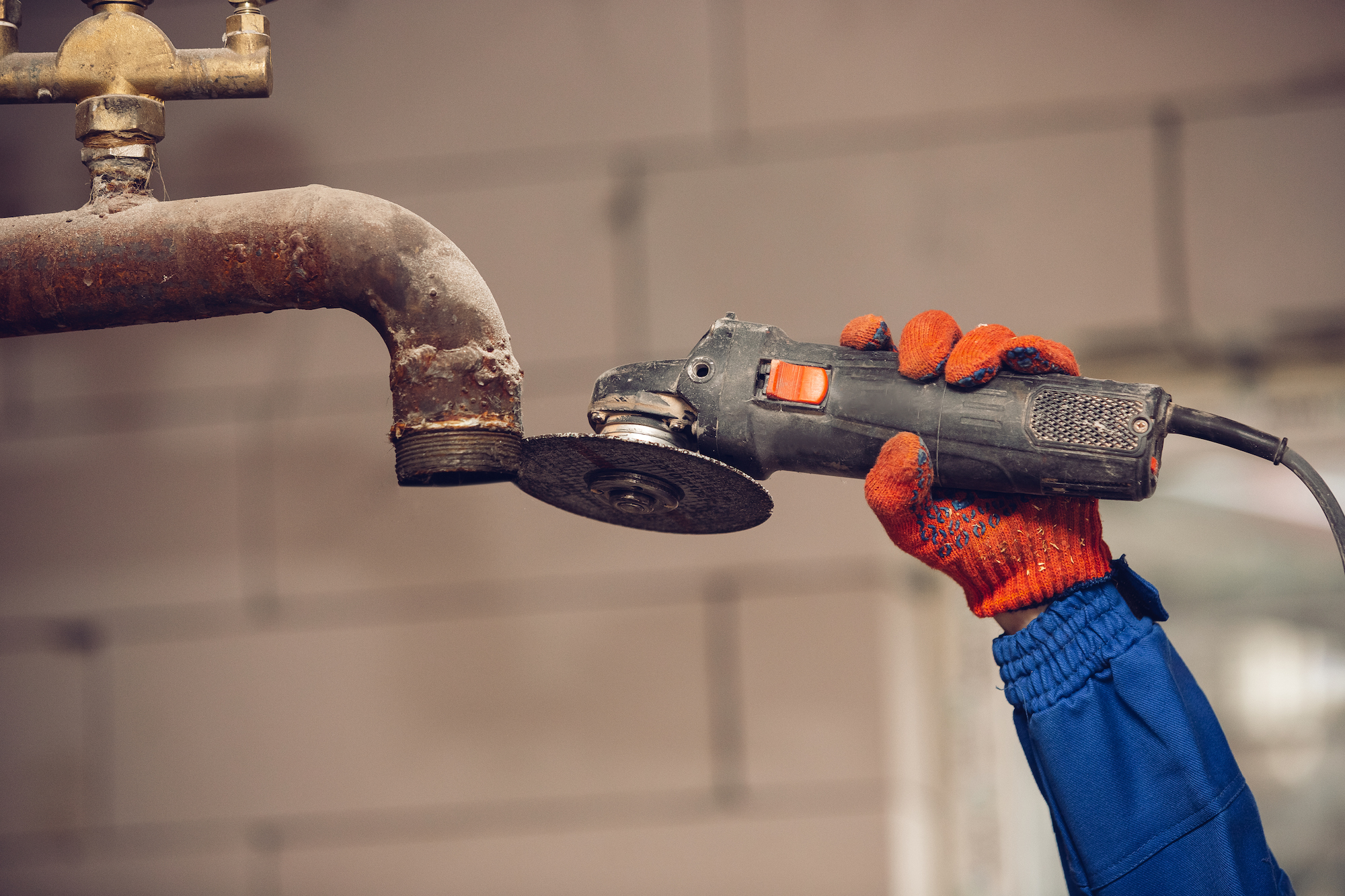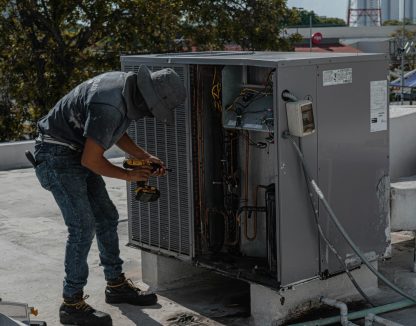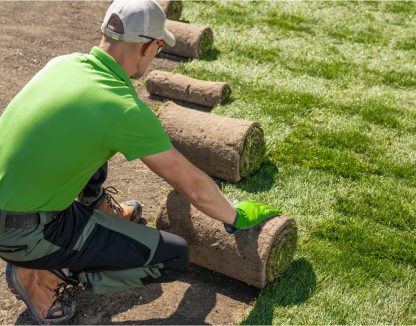Understanding how to strategically price plumbing services is essential for the success of any plumbing business. Meticulous planning goes into developing pricing models that strike the correct balance between profit and staying competitive. These models take into consideration factors like labor, materials, overhead expenses, and your long-term business goals.
We’ll look at two pricing strategies, how to calculate key expenses, and how to position your plumbing business competitively from a pricing and service perspective.
Seamlessly Implement a Custom Plumbing Flat Rate Price Book For Your Business Today
Time and Materials vs. Flat Rate Pricing
There are two primary pricing models utilized across the industry; time & materials and flat rate pricing.
Plumbing Time & Materials Pricing Model
Time and materials pricing promotes flexibility. An hourly rate, the total amount of time spent executing the job, total cost of materials and markups determine how much each job will cost the homeowner. This pricing model varies depending on how much time it takes to complete each job
Time and Materials Equation
((Total Job Hours x Hourly Rate) + Materials) x Markup = Time & Materials Price
Example: ((5 hours x $75) + $400) x 1.2 = $930
Pros
Cons
- Highly adaptive to changes in project scope or unforeseen complexities.
- Ex: pre-existing water damage or corroded pipes
- Disputes with customers over the perceived value of time spent versus output.
-
Questions from customers about the efficiency of technicians or the accuracy of billing hours.
-
Unexpected charges placed on customers due to project extensions.
Plumbing Flat Rate Pricing Model
The flat rate model promotes transparency. These prices include the average time for job completion, total cost of materials, and markups. Plumbing prices per fixture or standard operations are predefined—regardless of the actual time it takes to complete the work.
Time and Materials Equation
((Total Job Hours x Hourly Rate) + Materials) x Markup = Time & Materials Price
Example: ((5 hours x $75) + $400) x 1.2 = $930
Pros
Cons
- Highly adaptive to changes in project scope or unforeseen complexities.
- Ex: pre-existing water damage or corroded pipes
- Disputes with customers over the perceived value of time spent versus output.
-
Questions from customers about the efficiency of technicians or the accuracy of billing hours.
-
Unexpected charges placed on customers due to project extensions.
These four strategies can help structure flat rate pricing to cover unexpected costs:
1. Include a buffer for unforeseen issues
- 10% of the total estimate can provide a financial safety net for the unexpected.
2. Conduct a thorough assessment before providing a quote
- How many hours is the job estimated to take?
-
Will the job require more than one technician?
Are permits required for this type of job? - What are the required materials and equipment? What is the cost?
- What are the precise measurements for the required materials and equipment?
- Are there any concerns with the job site that would require extended labor hours or additional safety equipment?
3. Create a clear pricing structure for additional work
- Be transparent with the customer about how additional work will be communicated and charged. Will you charge a flat rate per hour or will you require a fully updated estimate?
4. Keep a reserve fund for unexpected expenses
- Create an emergency fund of at least 6 months of business expenses.
When deciding on a pricing model, it’s important to decide what you value most. If you value transparent pricing and customer retention, then flat rate pricing may be right for you. If you value a highly adaptive model, then time & materials pricing would be the best option. Selecting the ideal pricing model for your business involves careful reflection on your market position, customer base, and efficiency. To support this decision-making, utilize the following calculations to gain detailed insights.
Comprehensive Cost Calculations for Plumbing Jobs
When it comes to growing a successful plumbing business, it’s crucial to have a comprehensive understanding of the costs involved in your projects. Labor, materials, profit margins, and overhead all create a profitable pricing structure.
How To Calculate Plumbing Labor Costs
Before quoting a job, you must assess the complexity of the job. This assessment dictates the number of technicians needed and the estimated time to completion. Once you’ve determined the appropriate number of technicians, you will need to calculate your labor cost.
Labor costs should include the plumber’s hourly rate, federal and state taxes, social security, health insurance, and worker’s compensation insurance. Each of these costs will vary based on your market. Depending on factors like local and national average pay, demand for services, and cost of living, plumber costs can differ significantly between regions. For a fair wage and competitive hiring, this is an important factor to consider when setting prices.
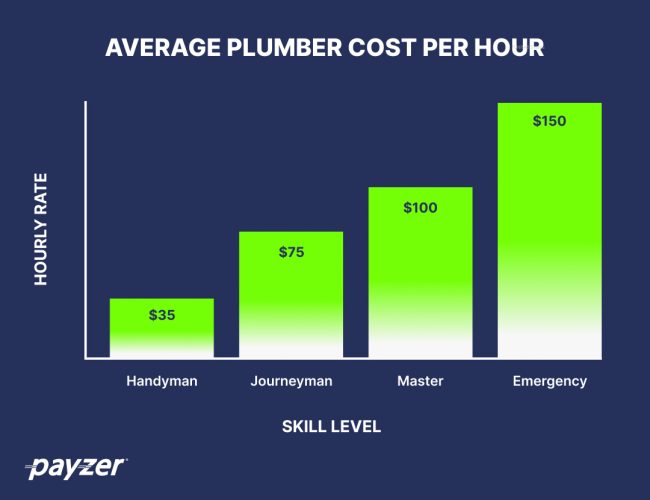
To maintain profitability, it’s standard in the industry to mark up labor costs. A 20-30% markup accounts for the unseen costs of running a business, such as recruitment, training, and human resources management.
Plumbing Labor Cost Equation
(Number of Technicians x Total Job Hours) x (Hourly Rate x Labor Markup) = Total Labor Costs
Example: (1 x 5) x ($75 x 1.2) = $450
How To Calculate Plumbing Overhead Costs
Overhead encompasses all the indirect costs of running your business, from office rent and utilities to vehicle maintenance, insurance, and marketing. It’s essential to determine these costs with precision to accurately spread them across projects.
Hourly Overhead Cost Equation
Total Monthly Overhead Costs / Number of Billable Hours Per Month = Hourly Overhead Cost
Example: $10,000 / 700 = $14.29
Overhead Cost Per Job Equation
Hourly Overhead Cost × Total Job Hours = Total Overhead Cost Per Job
Example: $14.29 x 5 = $71.45

Total Job Price Equation
Labor + Materials + Overhead = Total Job Price
Example: $450 + $420 + $71.45 = $941.45
How To Price Your Plumbing Services Competitively
Now that you’ve identified the costs associated with running your business, it’s important to conduct a competitive analysis to further inform your pricing strategy. To conduct a competitive analysis start with a report that identifies other plumbing service providers in your area. These providers should offer similar services and operate in the same locations as your business.
Once you’ve identified who your competitors are, utilize their websites, reviews, or word of mouth to outline the pricing for their services and compare them to your own. If you find that the price you’re charging for a service is substantially higher or lower than the average amongst your competitors you can evaluate decreasing or increasing your markup accordingly.
Additionally, consider the average income and home size of your clients. This information can help you determine which of the 4 pricing strategies will attract your customers the most.
- Economy pricing provides affordable rates due to your ability to complete jobs at a lower cost. This strategy would be best in markets where affordable service is the primary determining factor for customers.
- Premium pricing allows you to charge a higher rate than your competitors but also provides additional value, like premium services. This strategy is best used in markets that are quality service-focused and are willing to pay extra for convenience and quality.
- Competitive pricing means charging similar rates to your competitors and focusing on differentiators or incentives to attract customers. This is the most common pricing strategy and can be successful across most markets.
Keep in mind that you do not have to offer the average service price. If you offer higher quality service, equipment, or premium services, you may be able to justify setting above-average rates.
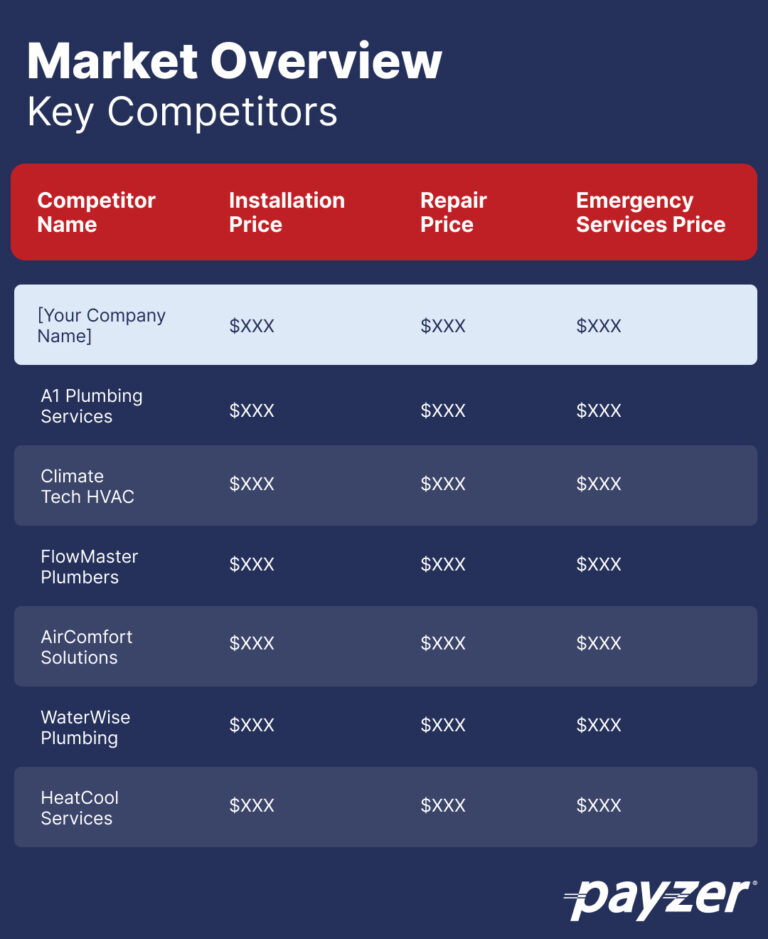
Premium Services for Setting Above-Average Prices
A premium service strategy will add additional value to your customers, enable you to charge higher prices and generate more profit. Customers are looking for plumbing companies that will be responsive in an emergency and provide affordable services. These 3 premium service examples are popular ways to provide convenience and value to your customers.
Examples of Premium Plumbing Services
Emergency Response Services
One of the most lucrative aspects of plumbing is the ability to respond promptly to emergencies. Implementing an on-call schedule with your technicians and providing an emergency phone number will demonstrate the readiness of your team to handle crises at any given moment and provide convenience to your customers. For 24/7 emergency service calls like sump pumps or clogged drains, you can charge a higher flat rate or create a premium service markup.
Membership Programs
Membership programs offer exclusive benefits like priority scheduling, reduced costs for routine maintenance, and service savings. This is a premium service that provides both convenience and value, which is important for driving customer retention. Membership programs provide an additional income source and predictable revenue for your business.
Customer Financing
Larger plumbing projects can be too expensive for customers to pay out of pocket and can prevent them from fixing serious plumbing issues. By offering financing options, you create a stress-free experience and remove another barrier to closing the sale. Financing prevents you from chasing down invoices and helps you get paid on every job.
When Is It Time To Update Your Service Pricing?
Achieving a balance between predictable pricing for your customers and profitable pricing for your business is essential. Your customers appreciate consistency, but your business must also remain agile in adapting to market changes. Striking this balance is key to customer retention and long-term profitability. Frequently changing prices can shake customer confidence, while stagnant pricing could leave your business vulnerable to rising costs.
One of the primary signals that should prompt a price review is a change in costs associated with running your plumbing business. You may need to change labor or material costs as the market shifts. Review your prices annually to accommodate for inflation and market changes.
How to Measure an Effective Plumbing Pricing Strategy
If you’ve developed your plumbing pricing strategy correctly, your business should be able to obtain an average gross profit margin between 40% to 60%. To calculate your plumbing business profit margin, you must first calculate your net income. Then, you will divide your net income by your total revenue to determine your profit margin.
Net Income Equation
Total Revenue – Material Costs – Labor Costs – Overhead Costs = Net Income
Example: $500,000 – $105,000 – $150,000 – $20,000 = $225,000
Profit Margin Equation
(Net Income / Total Revenue) x 100 = Profit Margin
Example: ($225,000 / $500,000) x 100 = 45%
Additionally, you can calculate the profitability of each job utilizing the same equations. On average, if you are obtaining your target profit margin on each job, then you know that the pricing model you’ve implemented is working for your business.
Lastly, customer lifetime value (LTV) is another key performance indicator (KPI) of effective pricing. LTV is the total revenue gained from each customer throughout your partnership. The average plumbing LTV is $8,023. A below-average LTV indicates an above-average turn rate or below-average revenue per job. LTV can be increased through an improved customer experience, higher pricing or job upsells.
How To Automate Plumbing Profitability
Plumbing management software can help automate profitability in several ways.
- Automatic job profit reports reduce the need for manual entries and spreadsheets while allowing you to make informed decisions on your pricing strategy.
- Accounting software integration with your preferred accounting software, like QuickBooks, to eliminate double-entry bookkeeping and provide simplified financial tracking.
- Flat rate price books that streamline profitable pricing and ensure your costs are covered on every job.
- Maintenance agreements that create recurring revenue while keeping track of upcoming renewals, overdue or expired payments, and upcoming appointments with ease.
When evaluating which plumbing software to work with these questions will help you find software that simplifies operations, improves your collections, and helps you sell more.
- What kind of onboarding and support is offered?
- Does the software integrate with QuickBooks (or other accounting software)?
- Does the software have custom maintenance agreements and proposals?
- Will I be able to collect payments from customers?
- Is there in-platform financing available?
- Is there an app available for ease of use in the field?
Payzerware is a single solution that fulfills all of your back office, field operations, client experience, and insight management needs. Payzerware offers automatic reporting, QuickBooks integration, flat rate price books, maintenance agreements, 24/7 support, comprehensive onboarding, in-platform financing, an easy-to-use app, and much more! Schedule a demo to see why Payzerware is trusted by over 15,000 contractors as their go-to software partner.
Establishing and maintaining a profitable plumbing pricing strategy balances the cost of service delivery with market demands and customer expectations. Embracing regular price evaluation practices is key to keeping your business competitive and profitable. You are ready to create long-term growth for your company by using these pricing strategies and plumbing software.
